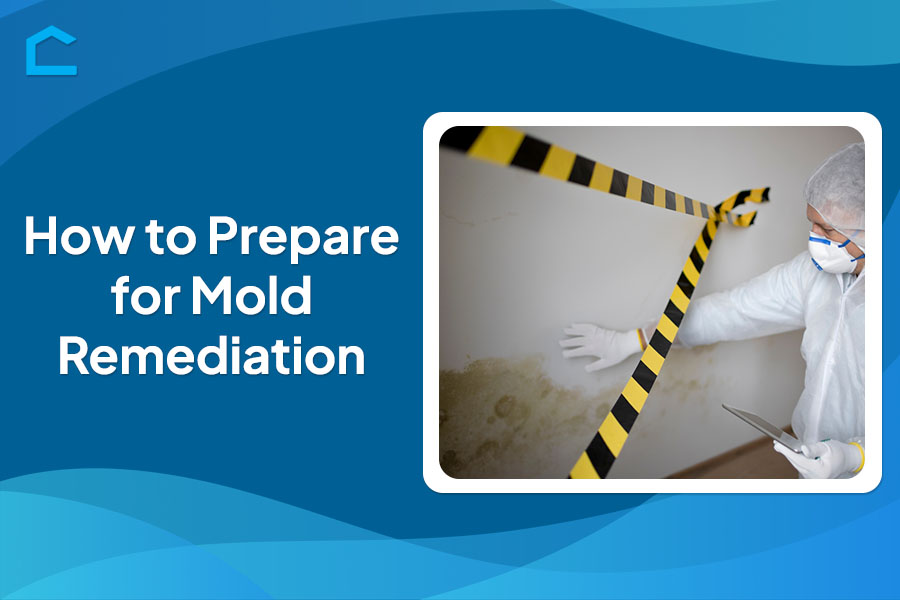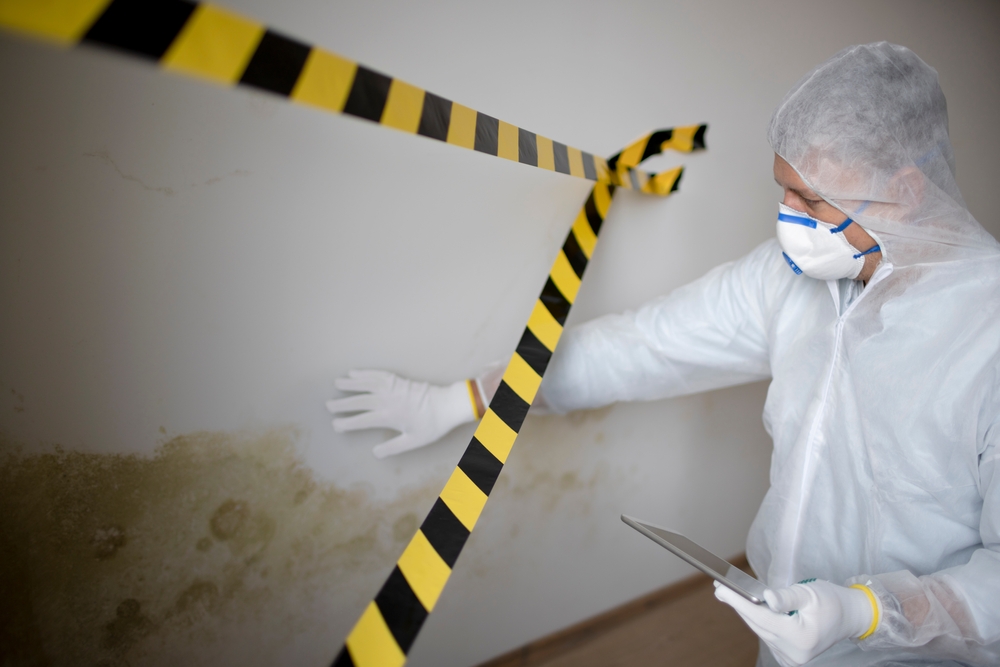How to Prepare for Mold Remediation

Facing a mold problem in your home can be overwhelming, but preparing for mold remediation doesn’t have to be. Imagine turning a stressful situation into an opportunity to protect your home and health with just a few strategic steps on how to prepare for mold remediation.
This article will guide you through the crucial steps to take before the remediation team arrives. These steps will help you safeguard your property and belongings while facilitating a smooth and efficient cleanup process.
Dive in to discover how you can transform your mold remediation experience and achieve peace of mind!

How to Prepare for Mold Remediation
Preparing for mold remediation is a crucial step that lays the groundwork for a successful cleanup. Proper preparation facilitates effective remediation by giving professionals easy access to affected areas and enhances the chances of complete mold removal. This process helps protect uncontaminated spaces from potential spread, ensuring the safety of both your health and property.
That said, key steps in preparation involve identifying the full extent of mold growth and creating a clear work area by removing furniture and belongings. Properly sealing and ventilating unaffected spaces is also essential. We elaborated more on these steps below.
How Should You Prepare for a Mold Remediation Project?
Clearing the affected area
The first step in preparing for mold remediation is thoroughly clearing the affected area. Remove all movable furniture, personal items, and small appliances, and store them in a clean, dry place to prevent contamination. Cover items that cannot be moved, such as heavy furniture or built-in cabinets, with thick plastic sheeting and seal the edges with tape.
Additionally, remove hanging items from the walls, roll up area rugs, and completely clear out closets and storage areas. This clearing ensures that the remediation team has full access to the area and prevents hidden mold from being overlooked.
Informing household members
Effective communication is crucial when preparing for mold remediation. Begin by holding a family meeting to explain the remediation process, its importance, and the expected timeline. Address any concerns or questions that family members may have.
Next, establish clear guidelines to ensure everyone avoids the affected area during the remediation. It’s important to explain the potential health risks associated with mold exposure. Additionally, set up a system for providing regular updates on the progress of the work.
Consider any special needs within your household, such as elderly family members or individuals with health conditions, and plan for their specific accommodations. For young children, provide an age-appropriate explanation of the situation and set up a special play area away from the remediation zone.
Setting up alternative living arrangements
Depending on the severity of the mold issue, you might need to consider temporary relocation. To ensure safety, consult with the remediation team about whether it is advisable to stay in the home during the cleanup process.
If relocation is necessary, start planning as early as possible. Explore options like staying with family or booking a hotel. Be sure to pack essential items for each family member, such as clothing, toiletries, medications, and important documents.
Additionally, make arrangements for your pets by either boarding them or finding a pet sitter in a mold-free environment. Remember to notify relevant parties, including schools and employers, about your temporary relocation and set up mail forwarding if needed.
Ensuring Safety and Accessibility
Ensuring safety and accessibility is crucial when preparing for mold remediation. Start by providing the remediation team with clear access to the affected areas. Remove obstacles, clear pathways, and prepare the workspaces, which might involve clearing out entire rooms and setting up designated spaces for equipment.
Furthermore, address health and safety concerns by wearing proper protective gear when entering the affected areas. Enhance ventilation by opening windows and using air purifiers with HEPA filters. To prevent the spread of mold spores, contain the affected area using plastic sheeting and tape.
Additionally, educate household members about restricted areas and clearly mark these zones with signs. By taking these steps, you ensure a safer environment for your family and the remediation professionals, facilitating a more efficient and effective mold removal process.
Post Mold Remediation Preparation
Once the mold is gone, it’s time to roll up your sleeves and restore your space. Start by sorting through the items from the affected area and discard anything with visible mold. Thoroughly clean non-porous surfaces with disinfectants and use a HEPA vacuum to remove lingering spores.
We advise you to pay attention to fabrics and upholstery; they also require some care. Apply antimicrobial treatments to help prevent future mold growth. For repairs, address any structural damage with a focus on safety, and resolve moisture issues promptly to avoid a return of mold.
Keep an eye on the situation with follow-up inspections and consider scheduling regular check-ups. Document everything for insurance purposes and establish a maintenance routine. This comprehensive approach not only aids in recovery but also helps keep your space mold-free in the long term.

Conclusion
Knowing how to prepare for mold remediation ensures a smooth and effective cleanup process. Strategic steps such as clearing affected areas, communicating with household members, and ensuring safety and accessibility set the stage for a successful remediation.
These preparations facilitate mold removal and help protect your property and health, minimize disruptions, and prevent future issues. With a clear plan and thorough preparation, you can transform a challenging situation into an opportunity to maintain a healthy, mold-free environment.
